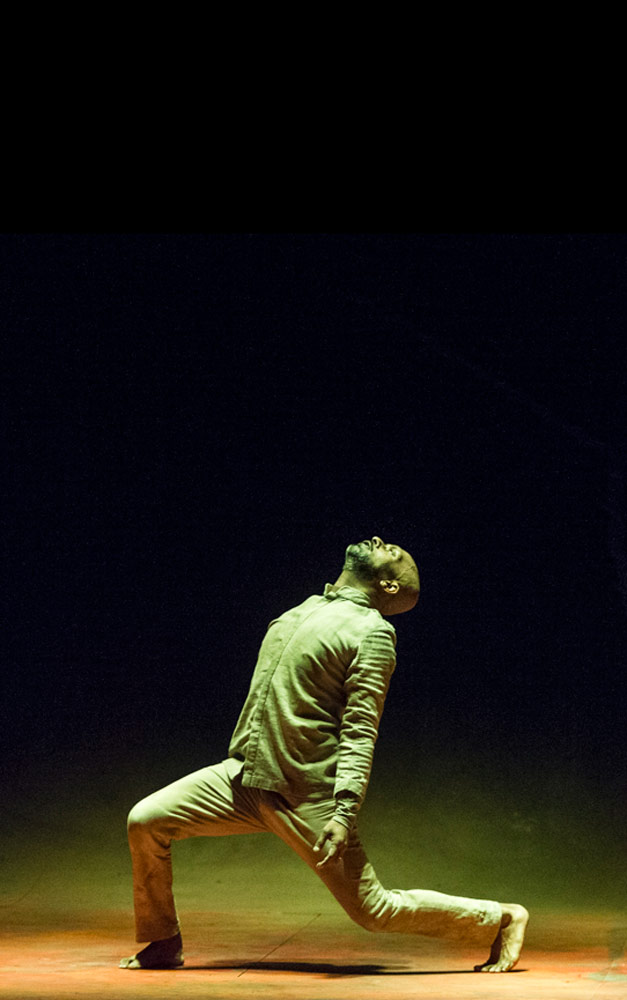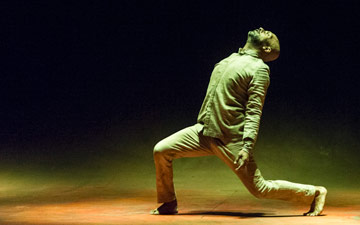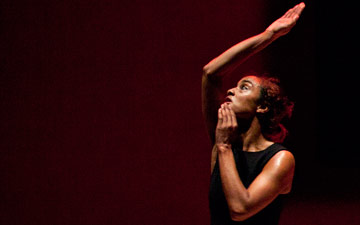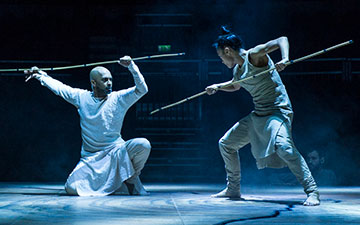
© Jean-Louis Fernandez. (Click image for larger version)
Akram Khan Company
Xenos
★★★✰✰
London, Sadler’s Wells
30 May 2018
Gallery of pictures by Foteini Christofilopoulou
www.akramkhancompany.net
www.sadlerswells.com
74,187 Indian soldiers died fighting in World War One, a war imposed upon them by Imperial obligations. Over one million Indian citizens fought in the war: in German East Africa, at Gallipoli, in Mesopotamia, and in the mud of the Western Front. For his last solo work, Akram Khan celebrates those long-forgotten men in this numbing performance of body-breaking intensity.
Xenos, which apparently means “stranger” or, more aptly for this piece, “foreigner”, is a tangled mass of many things but, above all, it seems to be an essay on loneliness. Although Khan is accompanied by five musicians, he walks alone. Narrative clues come in isolated bursts of text, written by Canadian playwright, Jordan Tannahill and recorded by Khan himself; latterly, broadcast as if through an old-fashioned gramophone, reminiscent of the famous His Master’s Voice advertisement with that legendary Terrier, named Nipper, staring into the cylinder. In one clutch of words, we hear the names of a sampling of the Indian soldiers being commemorated; in another, we learn that Khan’s shell-shocked sepoy – apparently lost in a rifle pit, in no-man’s land – has fought his war by laying telephone wires in the Belgian mud.

© Jean-Louis Fernandez. (Click image for larger version)
‘Apparently’, because nothing is ever clear, perhaps as a nod to the smoke-and-mirrors confusion of trench warfare. To begin with, Khan’s soldier is consumed by fear, nervous ticks spinning him every-which-way in response to distant dog barks and other real and imagined noises. Gun shots (loud) propel him into violent, distorted body shapes, each time recovering to be shot down, again.
At the beginning, Khan wears ghungroo bells, tightly wrapped around his ankles, and he performs a classical kathak solo with a noble, ebullient intensity that cuts right through that initial evocation of post-traumatic stress. The idea, perhaps, is that Khan’s subaltern was a classical Indian dancer, before the war, and, in extremis, his damaged mind has grasped onto distant memories of those happier times. Replacing fiction, with fact, I found myself reminiscing about Khan’s Ronin trilogy of kathak solos, performed on the South Bank, way back in the early noughties. There, he was the noble Arjuna, warrior hero of the Mahabharata; here, he is performing the same kathak movements but as a warrior of an altogether different kind. There is, however, no difference in the fascinating, coiling intensity of the performer, with his elegant spiralling arms, hand patterns, quicksilver feet and lightning spins.

© Foteini Christofilopoulou. (Click image for larger version)
This homage to his classical roots completed, Khan unwinds the ghungroo, so that they join the overarching imagery of ropes that litter Mirella Weingarten’s set. There is a Gloria-style incline, suggestive of the trenches, or a (s)hell hole in no-man’s land, which is first encountered with coils of rope lying down the slope. The work ends with thousands of pine cones rolling down the hill (reminiscent of the avalanche of scarab beetles in The Mummy). Other less obvious incongruities include a set of wooden dining chairs in the pit. Why? Eventually, this semblance of a home is ruined by the ropes – and everything attached to them – chairs, cushions, carpet and all – being pulled ‘over the top’ as Khan desperately tries to hold on to his precious belongings.
The work had begun –as the audience took their seats – in a classical concert, performed by Aditya Prakash (on vocals) and B C Manjunath (percussion), strategically interrupted by an electric surge, which quietened the audience in preparation for Khan’s violent entry onto the stage, accompanying a rope thick enough to tether the Titanic. At first, Michael Hulls’ lighting seemed exactly appropriate for the trenches – just a string of nine lightbulbs, and a match – but it grew in sophistication as the work progressed, eerily and atmospherically illuminating the five musicians on top of the trench, as if silvery-grey, battlefield ghosts.

© Jean-Louis Fernandez. (Click image for larger version)
As one who adored Vincenzo Lamagna’s scores for Khan’s Giselle and Until the Lions, I found his soundscape for Xenos harder to appreciate at first hearing and the amplification of the music was, at times, unsettling. It jarred against the simple purity of the songs by Prakash and Manjunath.
Contrary to some misunderstandings, Khan will dance on. But, this is the last hurrah for his solo dance career. Khan would have made a great sergeant-major. He is hardest, on himself; confessing in the programme notes to progressive self-doubt, as a performer. But, although lacking confidence in his body’s capacity to do what his mind demands, Khan has set himself to endure a marathon of punishment in this intense last stand, which seems an apt summary of a great career; and in remembrance of a worthy cause.

















The comments make me long to have seen this work. What a pity Khan will not present it in some limited U.S. settings, and, especially, in San Francisco.